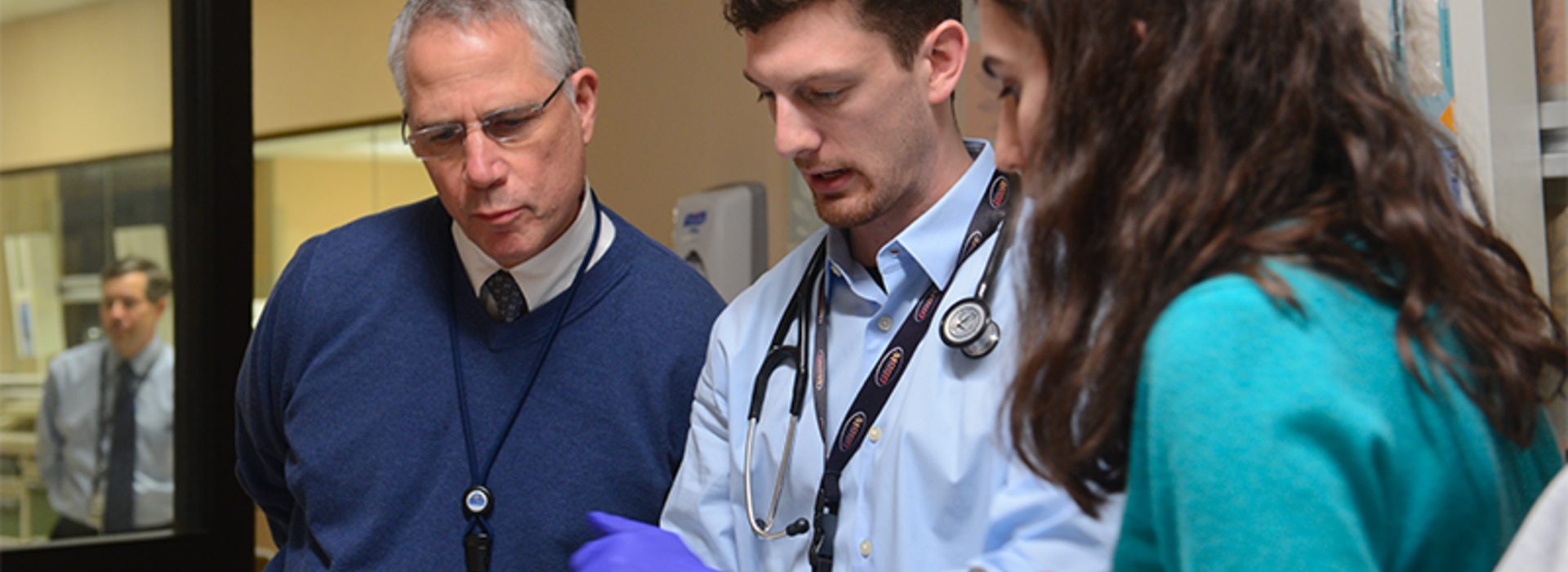
Medical School & U.S. Department of Veterans Affairs Commemorate Historic Partnership
Seventy years ago, World War II soldiers were returning to the U.S. in mass numbers, many of them with war-related injuries.
“The VA hospitals at that time had 100,000 new patients,” said Gordon Willard, Education Program Specialist for the Minneapolis Veterans Hospital. With just 98 hospitals, most of them rural, that offered fewer than 84,000 beds and only 1,000 physicians the VA was in crisis mode.”
General Omar Bradley, newly appointed Administrator of the U.S. Department of Veterans Affairs came up with an innovative solution to address the lack of resources, proposing VA hospitals partner with U.S. Medical Schools to utilize their physician resident training programs and faculty to provide care to returning soldiers while gaining valuable clinical training opportunities.
In 1946, the University of Minnesota Medical School began forming an academic affiliation with the Minneapolis VA hospital, becoming one of the first schools in the country to enter into this landmark partnership and, to the best of our knowledge, the first to implement it.
“Dr. Harold Diehl, who was the Dean of the University of Minnesota Medical School at the time, was a strong advocate of the plan,” said Willard. “Dean Diehl was instrumental in getting this initiative off the ground."
The first resident from the University of Minnesota Medical School rotated to the Minneapolis VA hospital on January 1, 1946. Today, approximately 300 Medical School residents and fellows work at the hospital annually.
“We are very proud of our close partnership with the University of Minnesota Medical School,” said Willard. “We benefit greatly from the dynamic and talented residents, students, and faculty."
The expansion of the joint educational program is evident as it was created for graduate medical education training but now includes undergraduate medical school clerkships at the Minneapolis VA hospital in 12 different clinical departments.
“Our partnership not only contributes to the strength of the VA’s healthcare system but provides high-quality training for our students,” said Brooke Nesbitt, Clinical Education Manager at the University of Minnesota Medical School. “Nearly nine percent of our clinical placements are completed in the Minneapolis VA Health System annually.”
The educational offerings through the VA continue to evolve, the most recent being the VA Longitudinal Undergraduate Education program or VALUE. In this program, ten medical students complete a nine or ten-month integrated experience at the VA hospital where they track a panel of patients across various specialties. The hope is students will develop more meaningful relationships with their patients and instructors.
These educational offerings provide veterans with the experience of receiving emerging, frontline care from the students, residents, and fellows,” said Willard. “In return, students get to handle the unique medical conditions affecting our veterans.”
In addition to the partnership with the University of Minnesota, the VA now has academic affiliations with more than 1,800 educational institutions, and more than 70 percent of all doctors in the U.S. have received training in the VA healthcare system.
“The workforce transformation created through this historic collaboration has enabled the VA to support the University of Minnesota Medical School as a driving force in health care and education innovation,” said Willard. “These partnerships have benefitted all Americans and most importantly our Nation’s Veterans.”
Check out this infographic to learn more about the history of educational partnerships at the VA.